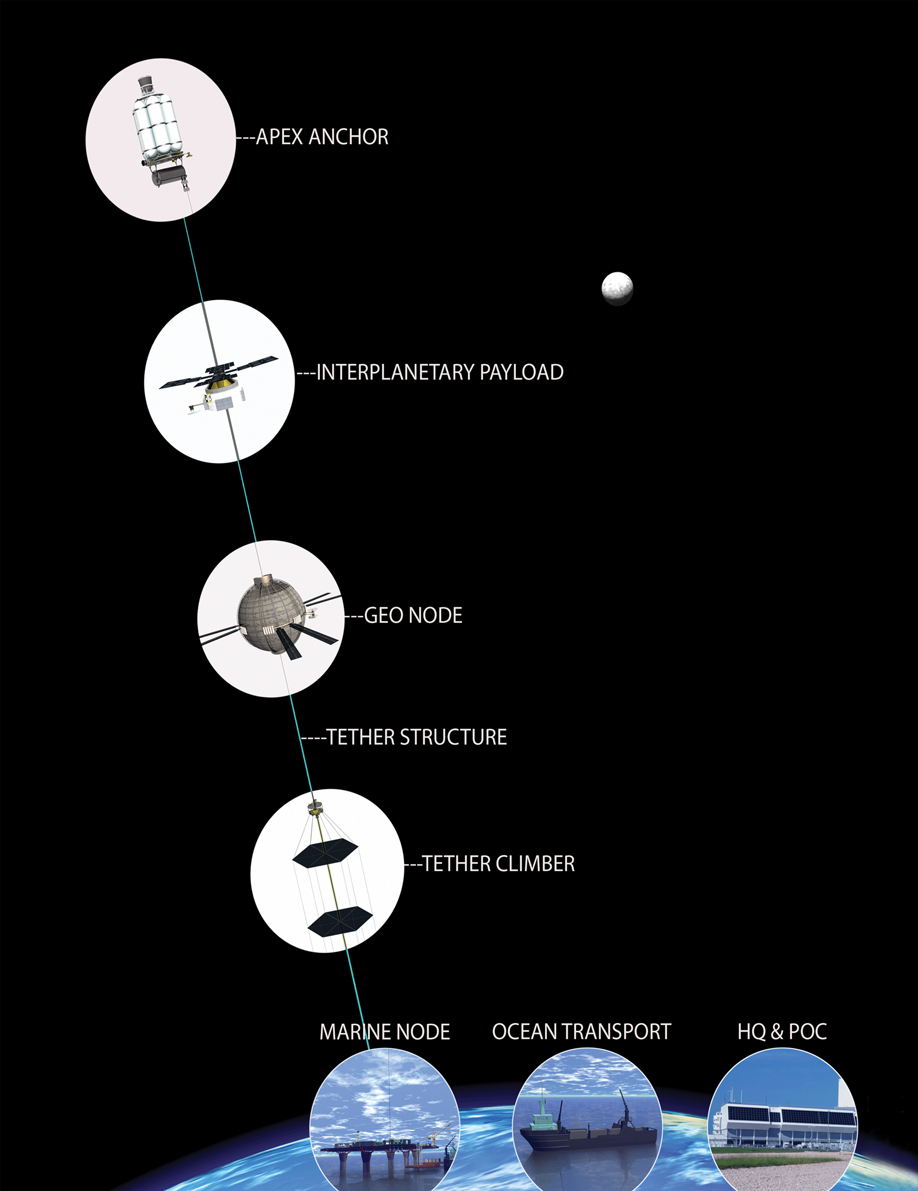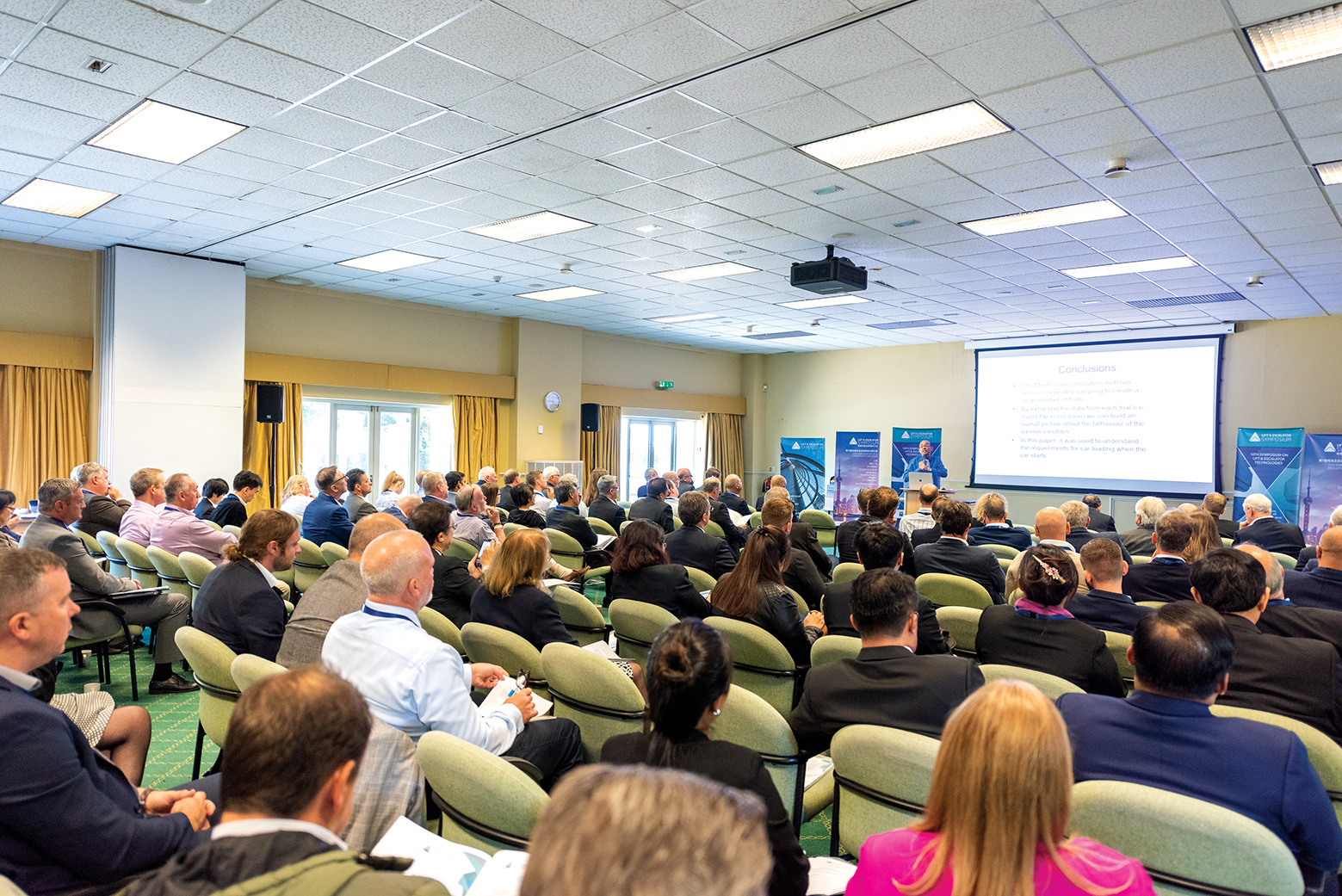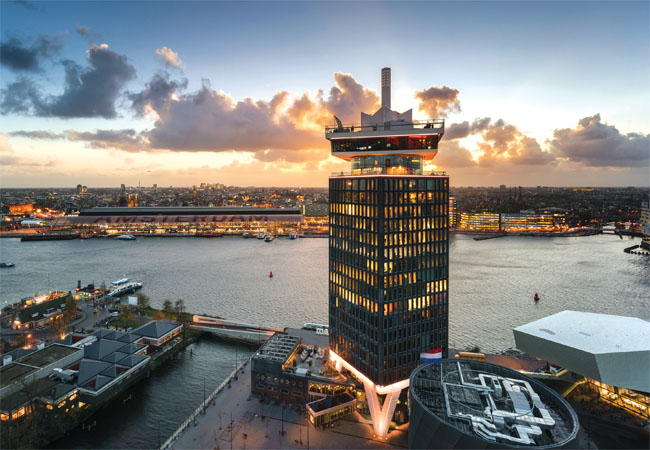
Credit: Rachel_Web_Design
Children have long been fascinated with the idea of lifts travelling into space: think Willy Wonka’s great glass elevator bursting through the roof of his chocolate factory. The characters in Roald Dahl’s classic book were launched into orbit after a catastrophic lift failure, but a group of real-life pioneers have long believed in the possibility of interplanetary travel by lift.
The concept of a space elevator has been around since the 19th century, when Russian scientist Konstantin Tsiolkovsky put forward the idea of a tangible connection to outer space. In 1959, fellow Russian Yuri Artsutanov proposed the idea of a towering structure that relied on tensile, rather than compressive, strength. His concept was for a tether to be sent down to Earth from a satellite in geosynchronous orbit. This concept has captured the imagination of scientists and writers ever since.
In 1966, four scientists wrote of a sky-hook in an American science journal, while Jerome Pearson studied the maths behind the theory and, in 1975, proposed an orbital tower. The idea was explored further in Arthur C Clark’s 1979 sci-fi novel The Fountains of Paradise.
The modern space elevator, as put forward by the International Space Elevator Consortium (ISEC), shares the same fundamental principle as Artsutanov’s idea – a thin vertical tether stretched from ground to space – but that is where the similarities end.
For the latest version, a tether is attached to Earth at the equator, stretching up to a counterweight, or apex anchor, far beyond geostationary Earth orbit. The anchor reels in and out, and a thruster control is required to moderate the motion of the tether.
Transporting cargo
This orbit, over the equator, would have a radius that produces revolutions at a speed that ensures a satellite remains permanently over the same geographical point on Earth. The idea is that elevator cars – known as climbers – ascend and descend the tether at the speed of fast trains. It would take an estimated four to five days to reach geostationary Earth orbit, and a new climber could be introduced on a daily basis.
The main benefit of the elevator is to make space travel more accessible, and to ferry cargo and passengers into space, says ISEC. Currently, it is not commercially available or affordable, and transit is neither comfortable nor safe.
The elevator has the potential to go beyond delivering payloads to space stations, however. Earth’s rotational motion could be exploited to inject payloads into planetary transfer orbits. By changing where the cargo is jettisoned from the tether, different orbits could be achieved. If released after 2,000km, the payload would obtain low Earth orbit.
Releasing the cargo after four to five days would achieve geostationary Earth orbit – and further still would achieve what is known as transplanetary injection. This is possible because travel along the tether increases the speed of the cargo; at a certain velocity, it will escape the Earth’s orbit.
Members of the ISEC suggest the moon and Mars as initial targets for interplanetary travel and say it could be used to deliver infrastructure for the first settlers on Mars.

At the end of its tether
The space elevator’s tether is held upright by centrifugal forces created by the rotation of Earth. This force pulls the tether taut, away from Earth, while a centripetal force pulls the tether towards Earth. It’s like a mass being swung in circles on a string.
This puts tremendous force on the tether, so the specific strength (the ratio of strength to density) of the material used is of prime importance. Tethers created using carbon nanotubes are being considered because of their high tensile strength and the low density of the material. Such a material could support its own weight for much greater distances than any material available today. Scientists from the ISEC are hoping for a specific strength of 30-40 MYuri, the new unit created in homage to Yuri Artsutanov; 1MYuri = 1 million Pa/(kg/m3), which is higher than the minimum requirement for a tether.
As for the design of the tether, it would have to taper down in thickness from the point of greatest tension, at geosynchronous Earth orbit, to the point of least tension, at the Earth’s surface. Carbon nanotubes are very elastic, which may give them the flexibility to deal with the Coriolis effect produced when the climbers ascend. This is the apparent movement of objects when viewed from a separate, independently rotating object, such as Earth.
The velocity of the tether increases the further away it is from Earth – so, as they ascend, each space elevator will be going more slowly than the part of the tether onto which they are about to climb. When the Earth rotates forward, the Coriolis force will act in the opposite direction; this process will be the same, but reversed, during the descent of each climber.
An apex anchor, approximately 100,000km from Earth, is required because of the non-uniform gravitational and centrifugal forces acting on the tether as it extends away from Earth (for comparison, the moon is 384,400km from Earth). Suggestions for what could be used as an apex anchor include a captured asteroid, used climbers, and a space dock.
Solar power
The space elevator will be powered by solar cells on the climbers, each obtaining electricity from sunlight, or from laser light shone from the base of the tether. This means the climbers do not need to carry fuel, which makes up 90% of the weight of a rocket.
There is currently a wide range of suggested designs for the climbers, but they will probably use rollers to ascend the tether using friction. Special climbers will have to maintain the functions of the tether and ensure its safety. They will also be given their own propulsion systems to enable the tether to be pushed away from any large pieces of space junk orbiting the planet.
One of the biggest challenges of the space elevator will be suspending tens of thousands of miles of tether ribbon from outer space back down to Earth – and this will require multiple stages.
The first is lifting, with rockets, an 80-tonne ‘seed ribbon’ of carbon nanotubes from Earth into low orbit. At this point, the seed ribbon will be assembled into longer ribbon and then boosted, again by rockets, to geosynchronous Earth orbit. Additional ribbon material will be added, extending the tether into outer space and down towards Earth, until the end of the ribbon closest to our planet starts downwards, pulled by gravity. The tether will be captured at the ground station, where it can be anchored.
The tether could be reinforced while it is being lengthened, but it is calculated that a thickness of 7cm could lead to the transfer of 1,000 tons of material per day, which is equivalent to three International Space Stations.
It currently costs about $20,000 (£15,300) per kilogram sent into space for every payload; the space elevator could slash that to mere dollars.
2031: A space Odyssey
The ISEC is aiming to deploy a seed tether by 2031, and says single-string testing could be carried out with climbers while the tether is being reinforced. Developments are being carried out by a number of companies, including LiftPort Group, which – in 2006 – stretched carbon ribbon one mile into the sky using balloons, before sending robots to ascend the tether.
The area around the Earth port, node and tether itself will be closely monitored and protected. It will extend from the ocean floor to space and – or the geostationary Earth orbit and apex node – the protected region encompasses any volume swept out by the tether as the Earth rotates.
A potential limitation of the venture is that the tether must remain over the equator, so loading of cargo and people would, potentially, have to take place at an Earth port on the equator. However, it is possible to have two or more tethers that are reflected either side of the mirror line equator, meaning ports could be sited in populous cities in the southern and northern hemispheres.
Whether it is used for transporting tourists into space, generating solar power or delivering mining equipment to the moon, the space elevator could be the main mode of transport for tomorrow’s cosmic pioneers.
Dr Bryan E Laubscher is the founder of Odysseus Technologies, a company with the goal of developing high-strength nanotube materials




